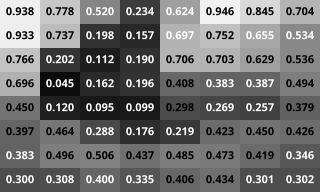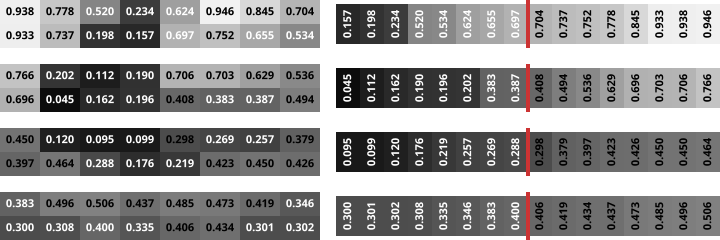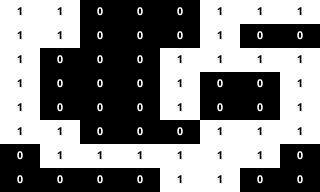6 releases (1 stable)
| 1.0.0 | Apr 8, 2024 |
|---|---|
| 0.5.0 | Sep 17, 2022 |
| 0.4.0 | Mar 29, 2022 |
| 0.3.0 | Aug 12, 2021 |
| 0.1.0 | May 14, 2020 |
#229 in Images
Used in 3 crates
1.5MB
779 lines
blockhash
This is an implementation of the Blockhash algorithm for detecting similar images, and can produce 16-, 64-, 144-, and 256-bit perceptual hashes.
Support for the image crate is provided by default, but support for any image type can be easily
added.
Usage
use blockhash::blockhash64;
let img = image::open("images/example.png").unwrap();
let hash = blockhash64(&img);
assert_eq!(hash.to_string(), "c7c48f8989c77e0c");
The Blockhash algorithm
This is a basic outline of how the algorithm works. Note that this explanation uses floating-point numbers, but the library itself only uses integer operations in order to avoid any rounding errors.
To demonstrate the algorithm, we will calculate the 64-bit hash of the following image:

First we convert it to a grayscale image by taking the average of the red, green, and blue components:

Then we divide the image into 64 (8×8) blocks and calculate the average brightness for all the pixels in each block:

Next, we divide the blocks into 4 horizontal bands and find the median value for each band:

Blocks brighter than the median represent a 1 and blocks darker than the median represent a 0. This gives us the 64 bits of the hash, read from left to right, top to bottom:

We can represent the hash as a hexadecimal string:
c7c48f8989c77e0c
License
This project is licensed under the MIT license.